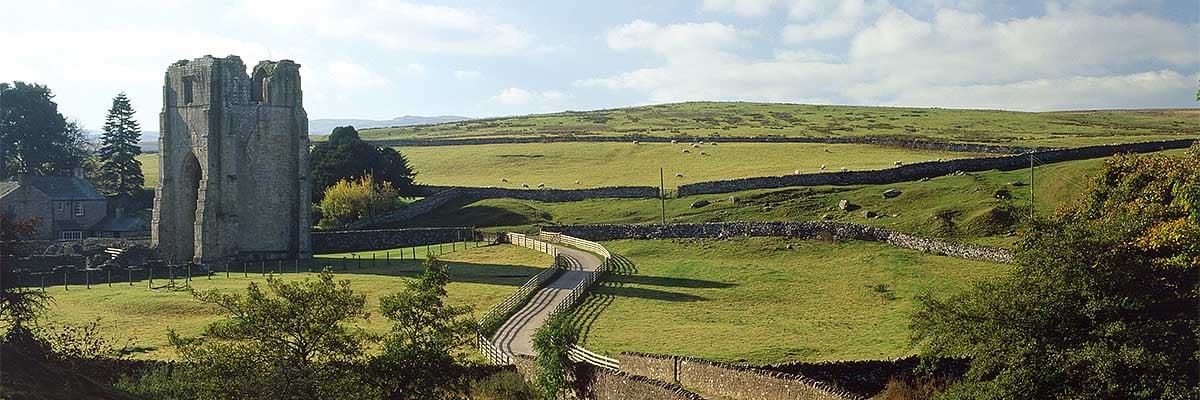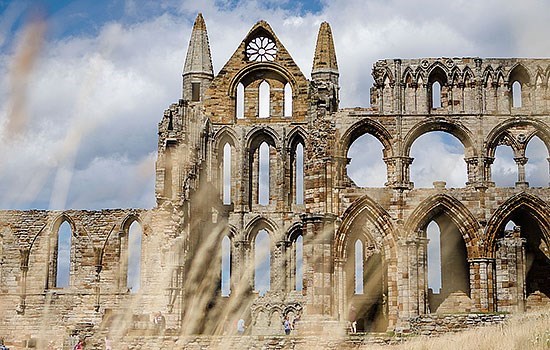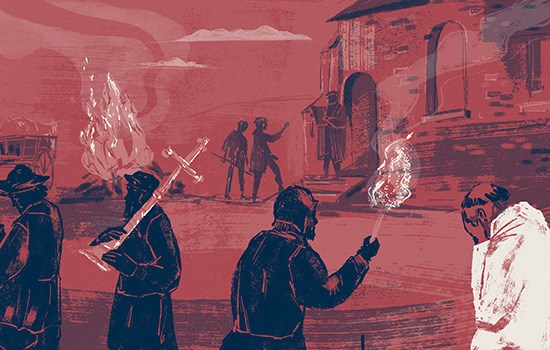History of Shap Abbey
Founded in the late 12th century in a secluded and beautiful valley of the river Lowther, Shap Abbey was one of 32 religious houses in Britain of the Premonstratensian order of canons. Though never a large community, it was wealthy, owning lands throughout Westmorland. After the Suppression of the Monasteries by Henry VIII, parts of the abbey were incorporated into farm buildings.

The Premonstratensians and Shap Abbey
The Premonstratensian Order had been founded by St Norbert in Prémontré in northern France in 1120. Living a contemplative monastic life, these canons also served the local community as priests in nearby parishes. They were known as the ‘white canons’ because of their distinctive white woollen habits.
Shap Abbey was founded in about 1200 by a local baron called Thomas, son of Gospatric, who granted the canons land beside the river Lowther. A walled precinct with an outer gatehouse enclosed the monastic buildings, abbey mill and fishponds.
Shap was a relatively small community, only about 12 canons governed by an abbot, but it was rich, with lands donated by powerful northern families such as the Vieuxponts and the Cliffords. Apart from some Scots raids causing damage in the 14th century, its history was largely uneventful.
An Eminent Abbot
The most eminent abbot was Richard Redman (d. 1505), the son of a local landowner, who was elected abbot of Shap in 1458 while still a young man. He became the head of the Premonstratensian order in England, an important post which involved visiting all the English houses of the order, and reporting on conditions. He was eventually appointed bishop of Ely.
During the Suppression of the Monasteries the last abbot surrendered to Henry VIII’s men on 14 January 1540. All the occupants – the abbot and 14 canons – received pensions. The land was granted to the governor of Carlisle later in 1540. Some of the main monastic buildings were incorporated into a farm, but most were gradually dismantled and the materials reused.
Further Reading
Colvin, HM and Gilyard-Beer, R, Shap Abbey (London, 1963)



